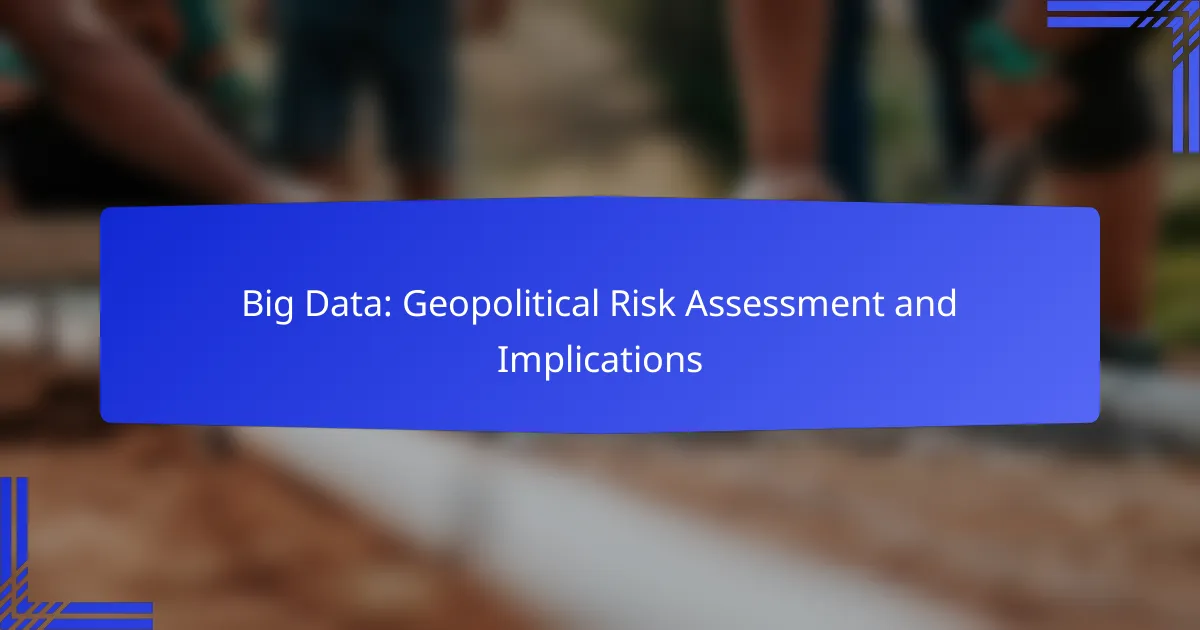Big data plays a pivotal role in assessing geopolitical risks by analyzing extensive information from diverse sources to uncover patterns and forecast potential conflicts. This capability empowers governments and organizations to make informed decisions, shaping strategies in investment, supply chain management, and technological advances while effectively mitigating risks associated with geopolitical uncertainties.
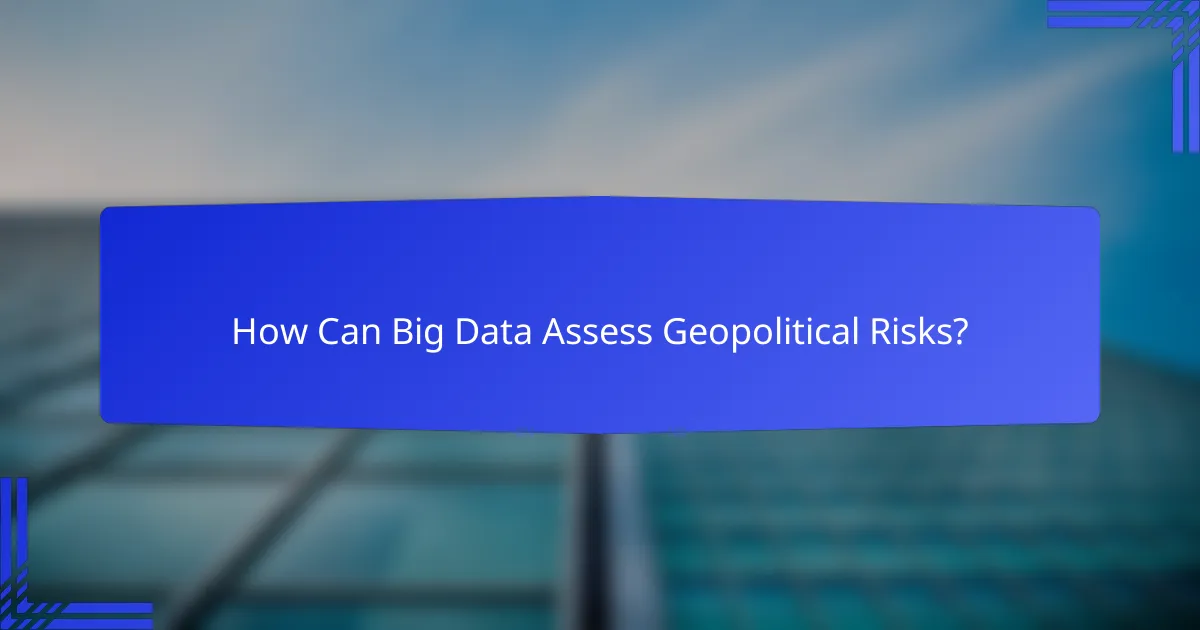
How Can Big Data Assess Geopolitical Risks?
Big data can assess geopolitical risks by analyzing vast amounts of information from various sources to identify patterns and predict potential conflicts. This process enhances decision-making for governments and organizations by providing insights into emerging threats and opportunities.
Data analytics tools
Data analytics tools are essential for processing and interpreting large datasets related to geopolitical events. These tools can range from basic statistical software to advanced platforms that utilize machine learning algorithms. Commonly used tools include Tableau for visualization and Python libraries like Pandas for data manipulation.
When selecting data analytics tools, consider their scalability and integration capabilities with existing systems. Ensure they can handle diverse data types, such as structured and unstructured data, to provide comprehensive insights.
Predictive modeling techniques
Predictive modeling techniques use historical data to forecast future geopolitical scenarios. Techniques such as regression analysis, decision trees, and neural networks can help identify trends and potential risks. For instance, a model might predict the likelihood of political unrest based on economic indicators and social media activity.
To enhance accuracy, regularly update models with new data and refine them based on real-world outcomes. This iterative approach helps in adapting to changing geopolitical landscapes.
Real-time data monitoring
Real-time data monitoring involves continuously tracking relevant information to identify emerging geopolitical risks as they occur. This can include monitoring news feeds, social media platforms, and economic indicators. Tools like Apache Kafka can facilitate the processing of streaming data for timely insights.
Establish alerts for significant changes in data trends to ensure prompt responses to potential threats. This proactive approach can help organizations mitigate risks before they escalate.
Geospatial analysis
Geospatial analysis leverages location-based data to assess geopolitical risks related to specific regions. By mapping data points, analysts can visualize patterns such as troop movements, resource distribution, or conflict zones. Geographic Information Systems (GIS) are commonly used for this purpose.
Incorporate geospatial data with other analytics to gain a multidimensional view of risks. For example, combining economic data with geographic information can reveal how resource scarcity might lead to regional instability.
Sentiment analysis
Sentiment analysis evaluates public opinion on geopolitical issues by analyzing text data from social media, news articles, and forums. This technique helps gauge the mood of populations and predict potential unrest. Natural Language Processing (NLP) tools can automate this analysis to process large volumes of text efficiently.
Regularly assess sentiment trends to identify shifts in public opinion that may indicate rising tensions. This can provide early warnings for organizations to adjust their strategies accordingly.
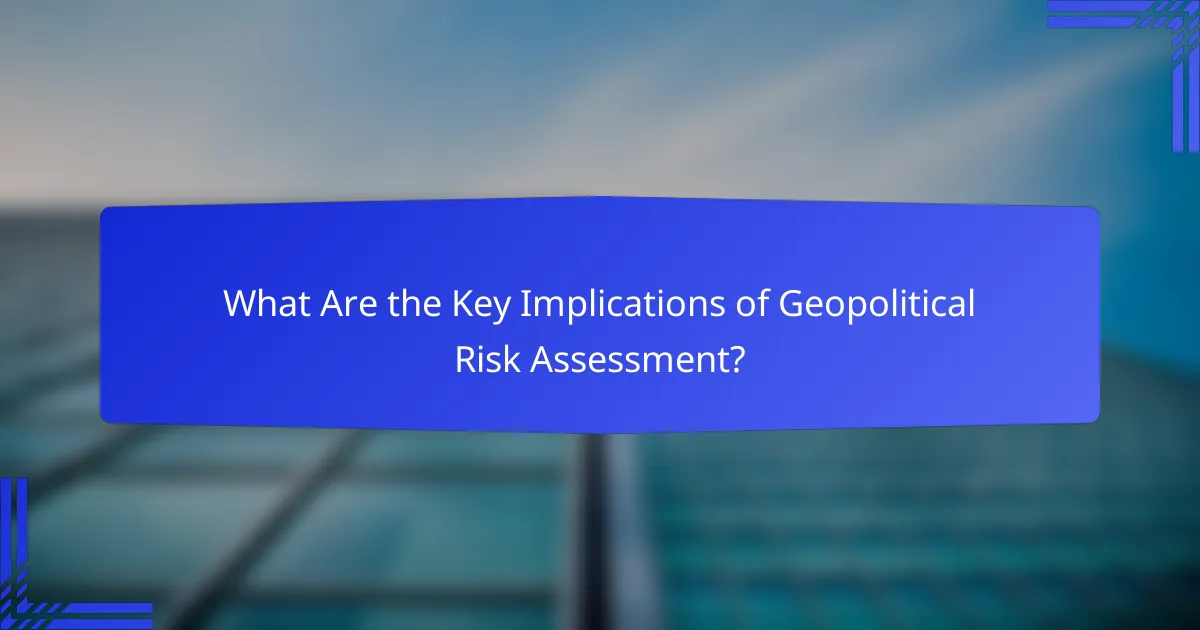
What Are the Key Implications of Geopolitical Risk Assessment?
Geopolitical risk assessment helps organizations understand potential threats and opportunities in different regions, influencing strategic decisions. Key implications include shaping investment strategies, optimizing supply chain management, guiding market entry decisions, and developing effective risk mitigation plans.
Investment strategies
Geopolitical risk assessment directly impacts investment strategies by identifying regions with favorable or unfavorable conditions for investment. Investors should consider factors such as political stability, economic policies, and regulatory environments when allocating capital. For example, investing in emerging markets may offer high returns but comes with increased risks.
To optimize investment strategies, regularly monitor geopolitical developments and adjust portfolios accordingly. Diversification across various regions can also help mitigate risks associated with specific countries.
Supply chain management
Effective supply chain management relies on understanding geopolitical risks that could disrupt operations. Companies must assess the stability of countries involved in their supply chains and consider alternative sourcing options to minimize potential disruptions. For instance, sourcing materials from multiple countries can reduce dependency on a single region.
Implementing a robust risk assessment framework can help organizations proactively identify vulnerabilities in their supply chains. Regularly reviewing supplier performance and geopolitical conditions ensures that companies remain agile and responsive to changes.
Market entry decisions
Geopolitical risk assessment plays a crucial role in market entry decisions by highlighting potential barriers and opportunities in new regions. Companies should evaluate factors such as trade agreements, tariffs, and local regulations before entering a market. For example, favorable trade agreements can enhance market access and reduce costs.
Conducting thorough market research and engaging local experts can provide valuable insights into the political and economic landscape, aiding in informed decision-making. Additionally, consider starting with a pilot project to test the waters before fully committing resources.
Risk mitigation plans
Developing risk mitigation plans is essential for organizations to address potential geopolitical threats. These plans should include strategies for crisis management, communication, and contingency operations. For instance, establishing clear protocols for responding to political unrest can help minimize disruptions.
Regularly updating risk mitigation plans based on the latest geopolitical assessments ensures that organizations remain prepared for evolving risks. Training employees on these plans and conducting simulations can enhance readiness and resilience in the face of uncertainty.
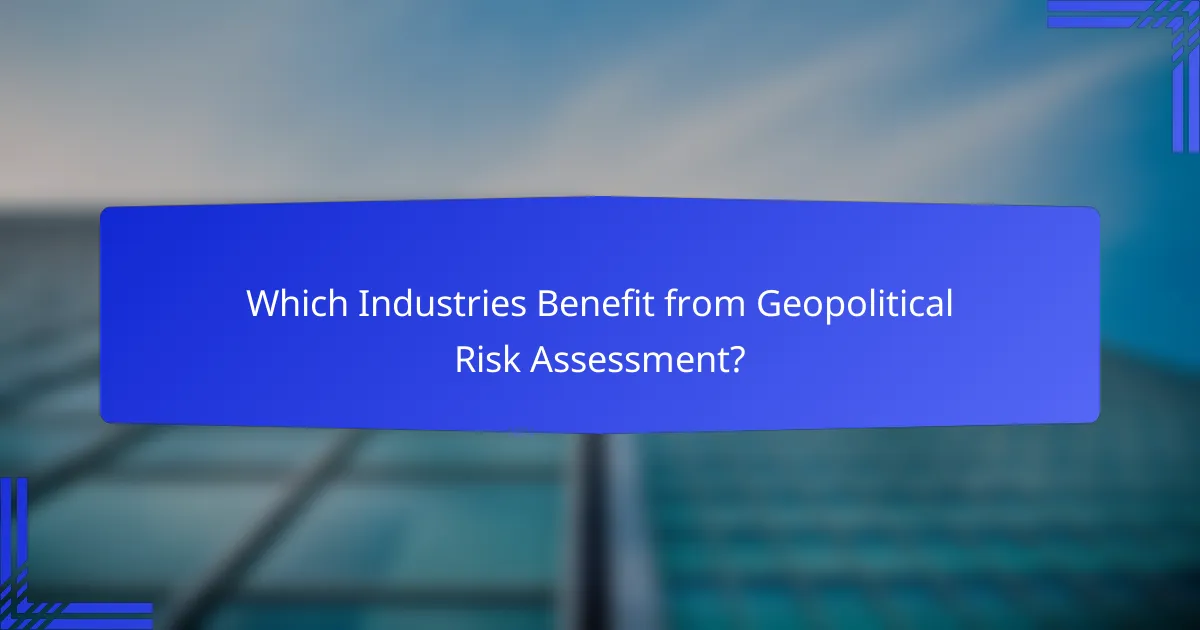
Which Industries Benefit from Geopolitical Risk Assessment?
Geopolitical risk assessment is crucial for various industries as it helps them navigate uncertainties and make informed decisions. Key sectors that benefit include finance, energy, technology, and manufacturing, each facing unique challenges and opportunities related to geopolitical dynamics.
Finance and banking
The finance and banking sector relies heavily on geopolitical risk assessment to manage investments and mitigate financial exposure. Institutions analyze political stability, regulatory changes, and economic sanctions to inform lending practices and investment strategies.
For example, banks may adjust their risk models based on the political climate in emerging markets, which can fluctuate rapidly. Understanding these risks can lead to better portfolio diversification and risk management practices.
Energy sector
The energy sector is significantly impacted by geopolitical risks, as energy resources are often located in politically unstable regions. Companies assess risks related to supply chain disruptions, regulatory changes, and international relations to ensure energy security and operational continuity.
For instance, fluctuations in oil prices can be tied to geopolitical tensions, prompting energy firms to develop contingency plans. Investing in alternative energy sources may also be a strategic response to mitigate risks associated with traditional energy supplies.
Technology firms
Technology firms face geopolitical risks that can affect supply chains, data privacy, and market access. Assessing these risks allows companies to adapt their strategies, such as relocating production or diversifying suppliers to avoid reliance on politically sensitive regions.
For example, tensions between countries can lead to trade restrictions, impacting hardware production. Firms may need to invest in local partnerships or alternative markets to sustain growth and innovation.
Manufacturing
The manufacturing industry benefits from geopolitical risk assessment by optimizing supply chains and production strategies. Understanding geopolitical landscapes helps manufacturers anticipate disruptions and adjust sourcing and distribution accordingly.
Manufacturers often evaluate risks associated with tariffs, labor laws, and political stability in countries where they operate. By conducting thorough assessments, they can make informed decisions about where to establish facilities or which markets to enter, ultimately enhancing operational resilience.
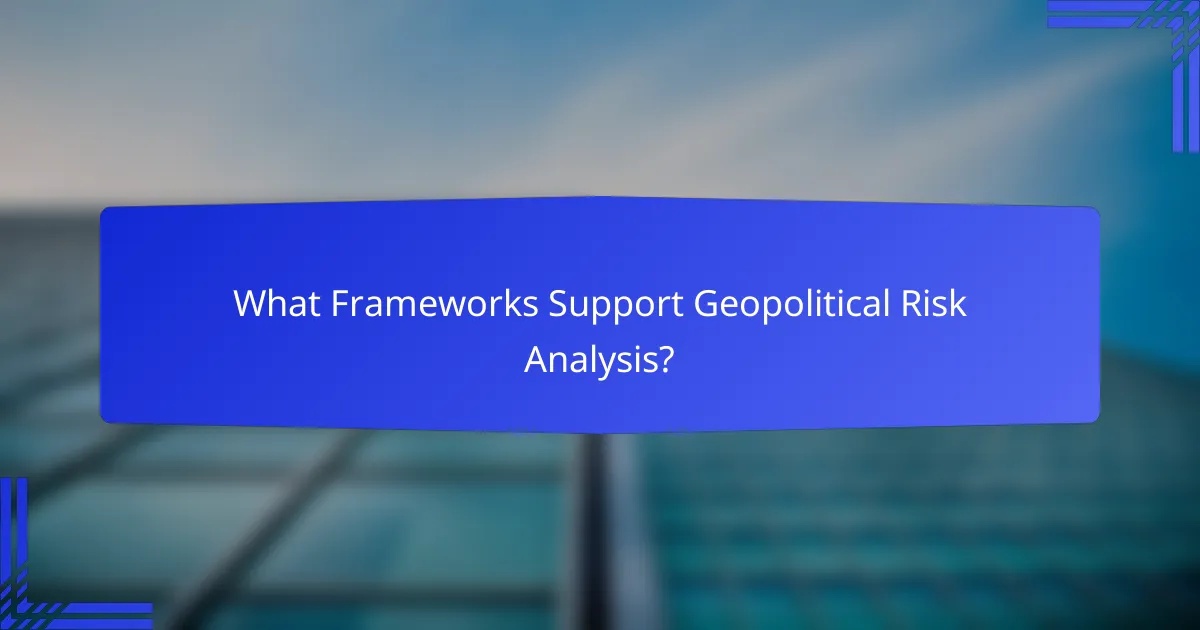
What Frameworks Support Geopolitical Risk Analysis?
Several frameworks facilitate geopolitical risk analysis by providing structured approaches to assess various factors impacting global stability. Key frameworks include PESTLE and SWOT analyses, which help organizations evaluate external and internal influences on their operations.
PESTLE analysis
PESTLE analysis examines Political, Economic, Social, Technological, Legal, and Environmental factors that can affect geopolitical risk. This framework allows organizations to identify trends and potential disruptions in their operating environment, making it easier to anticipate changes and adapt strategies accordingly.
For instance, a company considering expansion into Eastern Europe might analyze political stability, economic conditions, and social attitudes towards foreign businesses. This comprehensive view helps in making informed decisions and mitigating risks associated with entering new markets.
SWOT analysis
SWOT analysis focuses on identifying Strengths, Weaknesses, Opportunities, and Threats related to geopolitical risks. By evaluating internal capabilities and external challenges, organizations can develop strategies that leverage their strengths while addressing vulnerabilities.
For example, a multinational firm might recognize its strong brand presence as a strength but also identify regulatory challenges in specific countries as a threat. This insight enables the firm to strategize effectively, such as by enhancing compliance measures or seeking partnerships to navigate local regulations.
